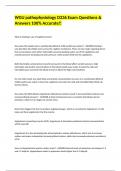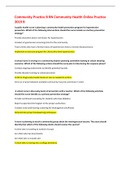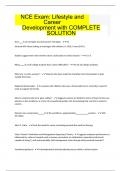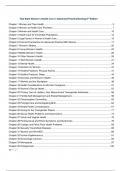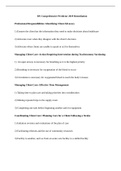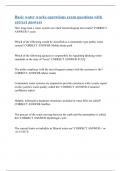Exam (elaborations)
WGU pathophysiology D236 Exam Questions & Answers 100% Accurate!!
- Course
- Institution
What is Starling's Law of Capillary forces? How does this explain why a nutritionally deficient child would have edema? - ANSWER-Starling's Law describes how fluids move across the capillary membrane. There are two major opposing forces that act to balance each other, hydrostatic pressure (push...
[Show more]
